
Lamp Shades: Light bulb heat and lamp electrical safety tips
Search
See also our main lamp shade article for more lamp shade topics.
Important safety tips for lamps and lamp shades
Table lamps, floor lamps and light fixtures run on electricity
Table lamps, floor lamps, desk lamps and other portable lamps use electricity. Electrical current is running through the plug, the wires, the lamp, and the light bulb. It's always important not to touch or be too near to these items when the power is switched on.
It is always best to turn off the electrical supply if possible by either switching it off at the wall switch or unplugging the lamp. Before trying to modify or clean it or swap out the light bulbs, always switch off and unplug as much as possible.
Also remember that water can conduct electricity, so you should make sure your hands are not at all wet, and there is no wet or damp or even moist materials in or on or near the lamp.
This includes food items or damp cloths because any non-dry goods can also conduct electricity. To avoid risk of electrical shock, take sensible precautions.
Any part of the lamp or light fixture where electrical current can be conducted or is flowing, is a potential area of risk. This includes the plug, the wires, switches, sockets, light bulbs, electrical outlets, USB ports, chargers, and wall switches.
Hardwired light fixtures

Most light fixtures are wired directly into the electrical supply of the building. This is called a "hard-wired light fixture". Instead of using a plug to plug the fixture into an electrical socket, the wires are connected directly into the wiring in the wall or ceiling.
As such, it's not easy or recommended to try to disconnect these wires. Instead the light fixture is connected to a light switch, usually on a wall. It may also be possible to turn off the electrical supply of the entire lighting circuit at the fuse/junction box.
In order to safely handle the light fixture, first make sure you switch off the light switch at the wall. All light bulbs must be off and the switch must be in the off position.
It's also a good idea to give the fixture some time to cool off because light bulbs generally produce heat and you'll want to avoid any risk of burns from handling parts of it. When the light fixture is switched off and has cooled, it should be safe to change light bulbs.
However, if you plan any other interference with the fixture such as tying to clean around electrical areas, accessing light bulb sockets, handling wiring etc, it is highly recommended that you switch off all of electrical power to the entire circuit the light fixture is on, at the junction box, if possible.
You don't want to risk even slightly the possibility that electrical current could flow while you're handling electrical items. If you are not sure what you are doing, it is also highly recommended to consult a professional electrician or someone with experience who knows how to safely handle electrically wired items.
Handling electrical plugs

Lamps are portable electrical items which can be plugged into a regular power socket on the wall. The lamp cord features a plug on the end which is wired in accordance with local electrical safety laws.
Even so, the plug does feature exposed metal parts and these metal parts do conduct electricity. It is vital to keep fingers and moisture as far away from the exposed metal pins as much as possible.
Generally the plug should feature enough of a plastic housing that you can grip to plug the item in or unplug it, without having to get your fingers anywhere near the metal pins. But always go slowly and take care to pay attention that your fingers, and any other items, are nowhere near making contact with the metal prongs.
The only thing you want the plug pins to be in contact with is the inside of the electrical light socket, ie the regular power outlet. The pins in the plug should insert smoothly and easily into the slots, and can usually only be inserted one way around.
When unplugging the plug also take care not to touch anywhere near the metal pins until the plug is well away from the socket. And it's best to be in the habit of never touching them for any reason.
In some countries the power sockets are accompanied by a switch on the socket. You should ensure the switch is always turned off before you plug the plug into the socket, and always turned off before you take the plug out of the socket.
Otherwise it's possible for electricity to bridge the gap between the plug pins and the socket while you're moving the plug, which could produce a dangerous spark.
The same applies to power strips, surge protectors and extension cords. Where possible, always turn off any power switches as much as possible before making changes to what is or isn't plugged in.
Once the plug has been either fully removed and is away from the socket, or has been fully plugged into the socket so that the plug is flush flat against the socket with no room showing any partly exposed metal pins, you can safely turn the power back on.
If you have removed and light bulb and have not replaced it, we recommend being careful NOT to turn the power back on until the socket has been appropriately filled with a light bulb. An exposed open socket with electrical power switched on is a potential risk for electrical shock.
Using extension cords and surge protectors
You can generally plug floor lamps, table lamps and other such portable lights into any electrical outlet, which includes power strips, extension cords and surge protectors.
However, make sure that the power strip is rated to handle the amount of electrical current, not only used by the lamp but by everything that's plugged in at once.
Check the wattage rating of light bulbs and the total wattage used by the lamp, if for example it includes some electrical components as well. Make sure the extension cord is properly rated to safely run that high of a wattage and more.
Plugging in a few lamps to a power strip should be safe provided you are within the recommended electrical requirements for safe use. But it may not be advisable to put several higher-wattage lamps on the same strip.
Find out about your electrical circuits
It may be a good idea to learn about the electrical supply in your building, what "circuits" of wiring are in the walls, how much amps or watts the circuit can support, and how much power a single electrical outlet can support.
Note that in general most power sockets support 13 amps, and 13 amp plugs may include a fuse which will blow if excess power is drawn. But when you put a power strip onto a single socket, the combined total of all the devices plugged into the strip cannot exceed or even be too close to the maximum 13 amp rating for the wall socket.
You cannot for example plug in 3 1500-watt kettles to a single power strip because the general wattage maximum for the entire suite of plugged-in items is usually around 3000 watts or so. Check what your maximum wattage and amps ratings are for your power sockets and make sure any extension cords and the devices plugged into them are not exceeding this.
Also bear in mind that while you may have multiple wall sockets with their own maximum ratings, the electrical "circuit" itself (your home may have more than one circuit or wiring loop which connects several power sockets together and shares wiring) will have a maximum rating.
For example it could be rated for a combined use of no more than 32 amps (just an example), meaning that all the items plugged into that same circuit across multiple wall sockets cannot use more than the maximum rating combined.
Electrical cords

While the electrical power cord is usually durable and can last a long time, it is possible that kinks in the cord, furniture that sits on top of cord, cord which is pulled tight around a corner and so on, could lead to fraying or breakage in the cord.
The power might still be working but if the outer cover of the cord begins to degrade or split or begins to reveal the internal wiring, you should seek to repair or replace the cord.
Always check the cord periodically for any damages or signs of the outer covering coming away from protecting the internal wires. Any exposure of metal parts or signs of breakage.
A break in the power cord, even without it being visible, could lead to an electrical fire. So try to handle cords with care, position them out of the way of children and away from heavy or sharper objects, try to keep them tidily out of the way of anything that moves often, and inspect them occasionally to make sure they are still looking in good condition.
Checking the power cord
As part of this inspection, check to make sure that the outer cover of the cord where it meets the plug is not beginning to expose the internal wires. Sometimes the cord can slip out of the plug and there is then risk of the internal wires becoming strongly bent or broken.
The outer cover of the cord should go all the way into the plug and no internal parts should be visible. Check this also where the cord meets the lamp or socket to see that wires are as protected and covered as possible.
With the power unplugged and disconnected, you could also inspect the places where the cord connects to the internal parts of the lamp such as the socket, and where it is wired inside the plug itself.
But doing this is usually not necessary and should only be performed by a qualified electrician. Loosely connected wires could slip out or cause a spark, so the cord should be kept firmly secured on both ends.
In general, try not to tug on the cord, do not lift or drag the lamp by the cord, do not pull on the cord directly. Tuck the cord out of harm's way and try to ensure it is loosely positioned without strong tension or tight fitting.
Keep cords and wires away from children, animals, pets and moisture. A dog or cat or even a child playing with or chewing on a wire is a potential fire hazard and a safety risk.
Safe operation of switches

Table lamps, floor lamps and other types of portable lighting usually feature at least an on/off switch. The switch may be located in-line somewhere along the power cord.
It may be located on the lamp itself - such as for example a switch on the lamp base or a touch-sensitive switch integrated into the base. Or more traditionally, there may be a switch located near the base of the light bulb socket.
The light bulb socket switch could be of the type where you push a sliding pin in, sliding it out the other side partly, which activates or deactivates the power. Or it could be of the type where there is a knob which you turn that clicks into position to turn the lamp on or off, and possibly also operates multiple levels of lighting as in 3-way bulbs.
Operating a socket switch
When the switch is near the socket, always take care to look at what you are doing, where your fingers are, and be careful only to touch the switch. Do not touch the lamp socket or any electrical or metal parts.
It is generally safe to touch the lamp below the switch if needed for leverage. But since these switches are located quite close to the light bulb socket, just take extra care to not touch anything other than the switch where possible.
More switch safety tips
Switches located on the lamp base are generally safer and easier to operate, because they don't require reaching under the lamp shade to find the switch, or bending down to look for it.
Additionally switches which are located partway along the power cord are generally quite safe. These tend to be either rocker switchers, switches with a small wheel that you roll into position, or a sliding switch.
Occasionally on floor lamps you may see a larger 'foot switch' which is a round object with a push on/off type of button on the top which you can operate with a press of your foot, to save bending down.
Note that of the switch sparks, crackles, smokes, or in any way seems to cause you any fear as to it not being safe, it may be wise to have it replaced by an experienced electrician.
Also make sure that any light bulbs you are using in the lamp are at or below the maximum wattage the lamp is designed for. Exceeding the wattage can send too much electricity through the wiring and it is not rated to handle the current, which can cause it to heat up and start a fire.
Dimmer switches
An optional extra, if not included, is a dimmer switch. A dimmer switch can usually be added to any lamp, providing the light bulb you're using is designed to be dimmable.
A dimmer switch is usually a sliding switch which adjusts how much electricity is flowing to the lamp or light fixture. An appropriate light bulb, designed to work with a dimmer, will be needed.
Traditional incandescent bulbs can be dimmed easily. But for example, not all LED or fluorescent bulbs can be dimmed. They may included special electrical or electronic components or the gases in the fluorescent tubes may not be designed to operate at a lower amount of electrical current. But some LED and fluorescent light bulbs are specifically designed to support this functionality.
The dimmer switch has a plug and a socket and acts somewhat like an extension cord. One end plugs into your power socket on the wall or power strip, and then the lamp plugs into the other end of the dimmer cord.
You can then slide the switch to dim or brighten the lamp, up to the maximum brightness of the bulb. Since dimmer switches act somewhat like extension cords there is often enough length to position the dimmer on a side table or near to where you can operate it easily. A sliding switch may also be operated by foot on the floor.
Being able to dim your lighting allows you to adjust it for a range of moods or atmospheres, dimmer for greater visual comfort or brighter when you need extra light. Make sure the dimmer is rated for the amount of maximum wattage the lamp will use, as not all dimmers are rated the same.
The light bulb socket and maximum wattage

Be aware that the electrical parts of lamp and light fixtures are professionally designed to comply with safety laws. This means that the thickness of the wires and so on are deliberately chosen so that only a certain amount of electricity is safe to be used with it. When too much electrical current passes through wires that are not rated for it, they can heat up, potentially leading to a fire.
Therefore, lamps always have a maximum wattage rating, which tells you the maximum amount of watts that the combined light bulbs are able to use safely with the electrical wiring of the lamp or fixture.
This is often printed or attached as a sticker on the light bulb socket. If not, try to consult the manufacturer's documentation, consult the owners manual or the product listing if bought online, or contact the seller or manufacturer for clarification.
Note that most sockets will be rated for at least 60 watts, except for smaller lamps which may only support 25 watts. Note also that modern LED light bulbs use a lot less wattage and typically well below 25.
Even an 18-watt LED bulb will give off enough light to be equivalent to roughly a 150-watt incandescent bulb and is very bright. Yet it uses far less wattage. It's therefore safer to use LED bulbs where possible so that you remain well below the maximum wattage of the lamp or fixture.
The lamp socket and light bulb base
The light bulb socket, if the light bulb is replaceable, will likely feature exposed metal parts. The light bulb itself will also have metal parts near the bottom of the base. These parts are meant to make direct contact with the electrical contacts inside the socket.
While the socket is usually shielded around the outsides with a collar or a kind of insulating wall, designed in part to protect fingers etc from entering, care should still be taken not to poke anything into or near to the socket.
Only ever use the appropriate rated light bulbs, of the correct base type, designed to fit correctly into the type of socket. There are several types of socket so make sure you know what kind of socket you're working with and what type of light bulb is needed to correctly insert into the socket.
Edison sockets, bi-pin or bayonet sockets, and various other sockets all have different designs and pin placements, so it's not safe to try to use the wrong type of bulb. The wrong type of bulb will either not work, short-circuit, or post a risk for electrical shock or a fire hazard.
If you ever need to clean or repair or put anything into the socket other than the bulb, make absolutely certain and double check that all electricity is switched off and all switches are off and all power cords are unplugged before going anywhere near it.
Handling light bulbs

Light bulbs are generally quite fragile and often feature a dome made of glass. This dome is not very thick, and is not designed to withstand a lot of pressure or impact. Always try to handle bulbs gentle and with clean hands.
In the case for example of halogen bulbs, oils from your fingers can get onto the bulb surface, causing a hot-spot to heat up when the light is switched on, which can in turn cause the bulb to break apart. It's better to handle the bulb with a soft cloth or similar to avoid making the bulb dirty or greasy.
To put the light bulb into the socket, or to remove it, you should grip the bulb only gently with as much light force as is needed to allow you to turn the bulb. Light bulbs usually require a twist in order to unscrew or unlock them from their position, so that you can remove them.
You should not need to force a bulb. Applying too much pressure could break the bulb or cause the bulb to come away from its base, which will expose internal electrical items and break the bulb. This would be a safety risk as well as making it difficult to remove the disconnected bulb base from the socket.
Similarly when you insert the bulb, make sure the pins are properly aligned and the bulb is fastened into the socket correctly, using gentle pressure only. Do not over-tighten or force the bulb because it may break, and broken glass can be sharp and harmful, as well as exposing electrical components.
Always wait for the light bulb to cool off before you handle it. With a hot bulb like an incandescent Edison bulb, or even fluorescent bulbs, they can become quite hot and need some time to cool down.
Note that also the areas of the lamp around and above the bulb can become heated up, so care should be taken to allow the whole system to cool off before you attempt to handle the lamp. Even low-wattage LED bulbs produce some heat, so be careful when you approach any bulb.
Dealing with light bulb heat

Light bulbs convert electricity into light, but they are not entirely efficient at doing so. Some of the electrical energy is wasted and turns into heat instead.
Especially with more traditional incandescent bulbs, halogen bulbs and even fluorescent bulbs, heat is produced when the lamp is on. It may only take a few seconds for the bulb to become hot to the touch.
This heat has to be managed in a safe way, especially when the lamp is on for a longer period of time. The lamp is designed to handle this, because the lamp shade itself is a way to funnel the heat upward away from the bulb.
Ample space should be left around the bulb, between the bulb and the lamp shade, so that free-flowing air can rise up around the bulb and exit out of the top of the lampshade.
Leave room around the bulb for air flow
You should never cover the top of the lamp shade with any materials whatsoever, because heat will rise, collect in the top of the lamp, and it will heat up the materials. This then becomes a fire hazard.
Do not cover your lamp with decorative fabrics or anything else. The opening of the top of the lamp shade is there on purpose to allow the heat from the light bulb to escape. If you cover the opening, heat not only rises up but it also builds up inside the lamp shade producing even more concentrated heat, which is a fire risk.
Let the bulb have room to breathe
At least a few inches are needed around the bulb to make sure there is enough air flow to absorb the radiated heat from the light bulb. This heated air will naturally rise upwards and draw cooler air up from below.
This is why the lamp shade also features an opening at the bottom, which should not be blocked either, because it needs to allow cooler air to pass into the lamp from below.
- If using a 40 or 60 Watt incandescent bulb, leave at least 1-2 inches between the bulb and the shade
- If using a 75 or 100 Watt incandescent bulb, leave at least 2-3 inches between the bulb and the shade
- If using a 150 Watt incandescent bulb or higher, leave at least 3-4 inches between the bulb and the shade
- If using a compact fluorescent bulb, it will run cooler and requires less space - leave at least 1-2 inches around the bulb to be safe.
- If using an LED bulb, these generally stay relatively cool, but make sure to leave at least 1-2 inches around the bulb for safety.
With proper ventilation, the lamp should be able to operate for a very long time and still be safe. Even if the lamp warms up, or there is some warmth to the lamp shade and frame, it should still be within safety limits.
If you feel that the lamp is becoming especially hot you should seek some alternative options, such as a more open lamp shade shape, a lower wattage light bulb (such as LED), or perhaps find a more modern lamp.
Dust your light bulbs
One final thought is that you should sometimes dust off your light bulbs. Bulbs can accumulate dust and when the bulb is switched on this dust will heat up.
When the bulb becomes hotter it will start to "burn off" the dust. Especially in the case of hot bulbs such as incandescent bulbs and halogen bulbs. You may notice a general burning smell when they are switched on, as the accumulated dust begins to burn. Burning of any kind of is not what you want in your home or business.
You especially don't want thick layers of dust sitting directly on top of a hot bulb. There is potential for the dust to catch fire and to fall onto the ground igniting other furniture.
Always include your light bulbs in your periodic "dusting and cleaning" routine for your home or business, but make sure the bulbs are switched off and have had time to cool before you do this.
Clean and well-maintained lamps and light fixtures should operate for many years without problems.
Continue reading about lamp shades
Using lamp shades with light fixtures
How to attach a lamp shade to a lamp
How to measure lamp shades for a perfect fit
Matching a lamp shade to your lamp base
Lamp shade materials colors textures and patterns
Light bulb heat and lamp electrical safety tips
How to clean and repair lamp shades
How to create a custom DIY lamp shade
Explore Topics

Table of Contents
Lamp Shades: Light bulb heat and lamp electrical safety tipsImportant safety tips for lamps and lamp shadesHardwired light fixturesHandling electrical plugsUsing extension cords and surge protectorsElectrical cordsSafe operation of switchesThe light bulb socket and maximum wattageHandling light bulbsDealing with light bulb heatDust your light bulbsContinue reading about lamp shadesCommentsShopping Ideas
Trending
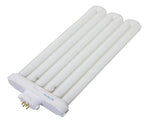

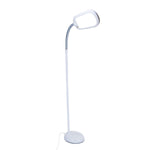
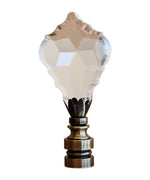



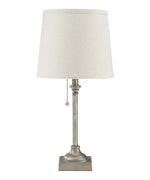
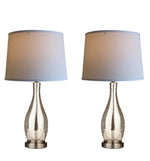

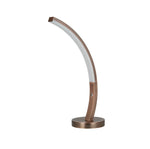

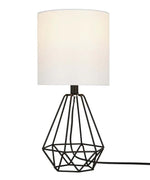
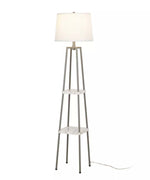


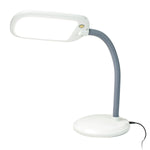










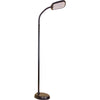



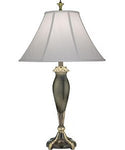

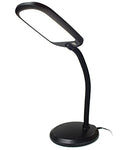


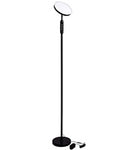
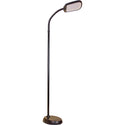
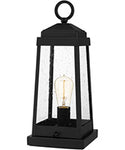
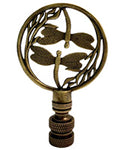
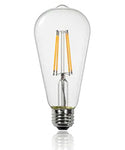
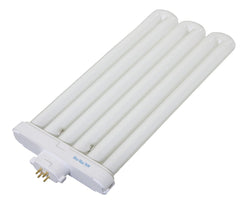
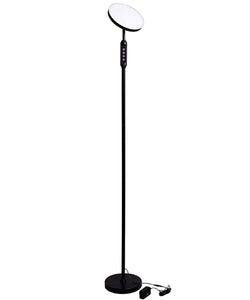
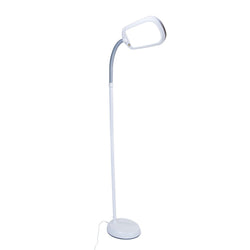
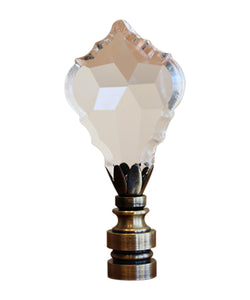
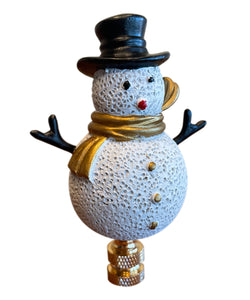
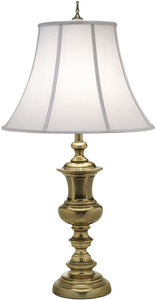
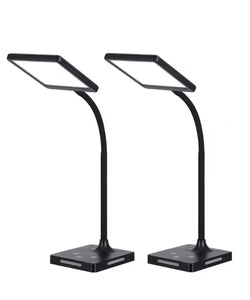




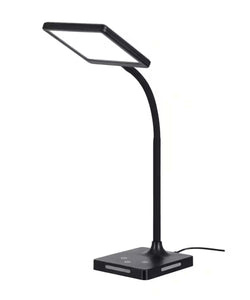
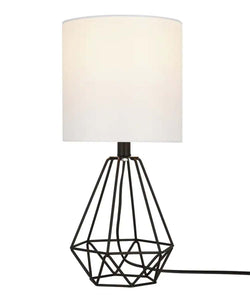
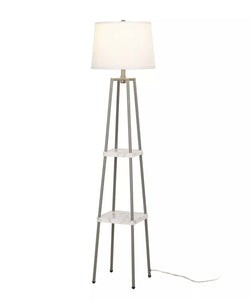






Comments